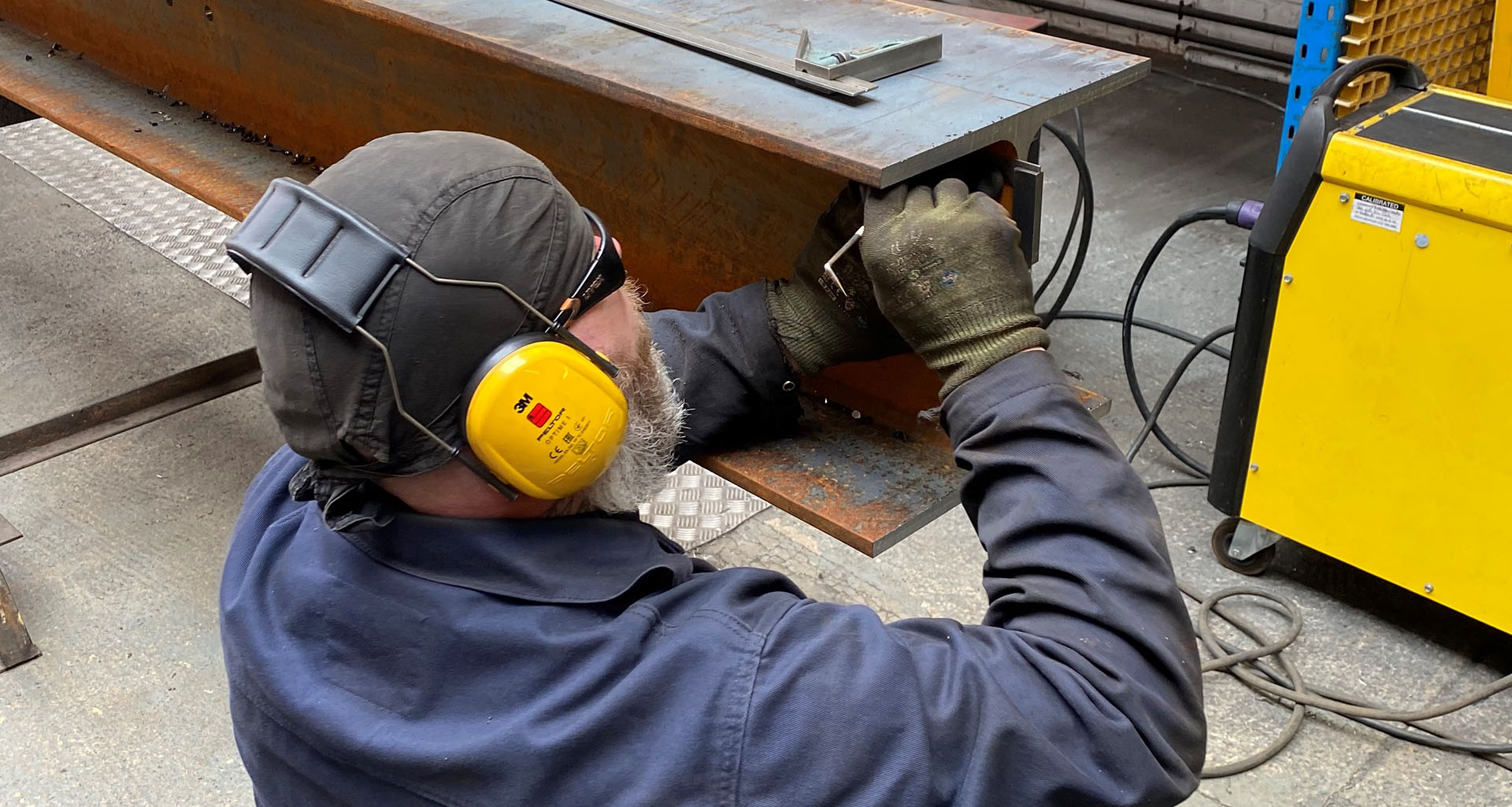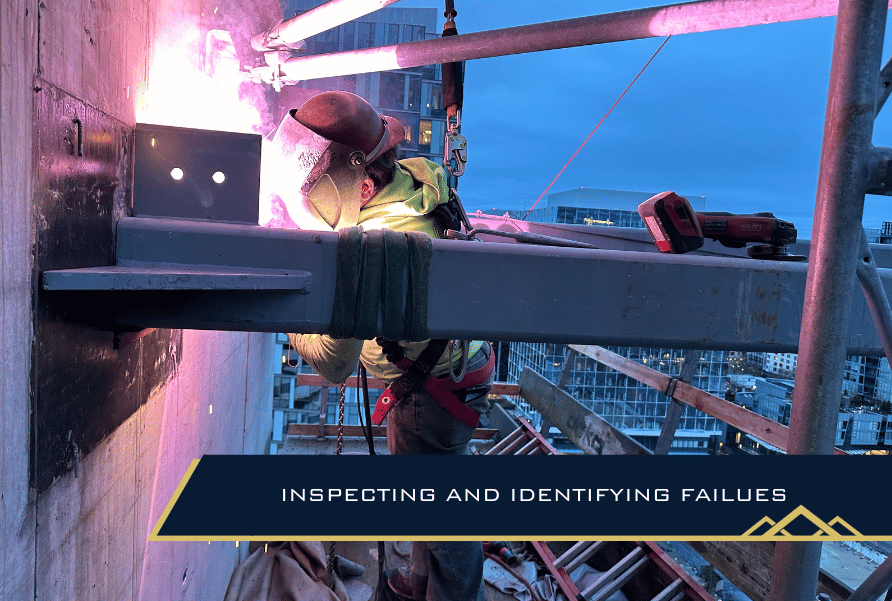Leading Benefits of Employing Specialists for Welding Inspection Madison
Leading Benefits of Employing Specialists for Welding Inspection Madison
Blog Article
Checking Out Advanced Tools and Techniques for Accurate Welding Examination
In the world of welding assessment, the search of accuracy and integrity is paramount, stimulating the growth of cutting-edge tools and methods. Technologies such as phased selection ultrasonic testing and electronic radiography are revolutionizing problem detection, offering unrivaled precision in defining welding flaws. In addition, laser scanning developments and computerized examination systems, outfitted with synthetic knowledge, are redefining the landscape by lowering human mistake and boosting precaution. As these advanced strategies remain to advance, they guarantee not only to transform assessment practices but likewise to increase appealing concerns regarding the future of quality control in industrial applications.
Ultrasonic Evaluating Innovations
Ultrasonic testing innovations frequently stand for the center of improvements in welding examination innovations. These developments have actually dramatically enhanced the ability to find and evaluate suspensions within bonded structures, making sure enhanced honesty and safety - Welding Inspection Madison. Ultrasonic testing uses high-frequency acoustic waves to permeate products, offering detailed info regarding internal features without triggering damages. The current advancements in this field have actually concentrated on increasing precision, rate, and the capability to translate complicated data.

Additionally, developments in software application formulas for data evaluation have improved the precision of flaw detection and sizing. Automated ultrasonic screening systems now offer high-resolution imaging, enabling in-depth assessments of weld top quality. These systems are commonly integrated with advanced visualization devices, which assist in the interpretation of results.
Radiographic Inspection Techniques
While ultrasonic testing technologies have actually established a high requirement in non-destructive examination, radiographic evaluation strategies remain to play an important duty in welding examination by offering unique insights right into material stability. Radiographic testing (RT) utilizes making use of X-rays or gamma rays to permeate materials, creating a radiograph that aesthetically stands for the interior structure of a weld. This imaging ability is very useful for discovering subsurface defects such as porosity, additions, and fractures that may not show up with surface evaluations.
The process entails positioning a radiation resource on one side of the weld and a detector on the contrary side. Variations in material thickness and density affect the depletion of the rays, generating a contrasting image that exactly delineates defects. RT is especially helpful for checking complex geometries and thick areas where other techniques may fall brief.
Despite its effectiveness, radiographic assessment needs to be conducted with strict adherence to safety protocols because of the unsafe nature of ionizing radiation. The interpretation of radiographs needs experienced employees, as the quality of the evaluation straight influences the dependability of the assessment. Consequently, ongoing developments in electronic radiography are improving image clarity and interpretation performance, reinforcing RT's crucial role in guaranteeing weld quality.
Laser Scanning Developments
Welcoming laser scanning modern technology in welding assessment has transformed the analysis of weld high quality and stability. This sophisticated approach supplies a non-contact, high-resolution methods of capturing in-depth 3D data of weld surface areas. Unlike conventional inspection techniques, laser scanning offers quick data acquisition, dramatically enhancing the effectiveness and precision of weld examinations. The innovation utilizes laser beam of lights to create precise 3D versions, which are crucial for in-depth evaluation of weld dimensions, surface irregularities, and prospective issues.
Laser scanning developments have actually brought about considerable enhancements in finding and identifying surface defects such as porosity, lack of blend, and damages. The high-resolution information allows assessors to execute detailed evaluations, guaranteeing that welds satisfy stringent sector criteria. This technique supports the growth of electronic records, facilitating lasting quality guarantee and traceability.
Furthermore, laser scanning innovation incorporates seamlessly with software options designed for automated problem discovery and analysis. The resultant data can be conveniently shared and examined, advertising joint decision-making procedures. As sectors continue to require greater criteria for weld quality, laser scanning remains at the center, supplying unrivaled precision and efficiency in welding examination.
Automated Examination Equipments

Automated assessment systems use the benefit of consistency, eliminating human mistake and subjectivity from the inspection process. They are designed to operate in numerous atmospheres, from production floors to remote field websites, making certain comprehensive insurance coverage. Welding Inspection Madison. These systems can be configured to comply with certain welding standards and standards, giving comprehensive reports and documents for quality control purposes
Furthermore, the integration of cloud-based platforms promotes the storage space and analysis of huge quantities of examination information. This allows pattern analysis and predictive upkeep, allowing manufacturers to attend to potential problems before they escalate. The fostering of important site automatic inspection systems is an essential step towards improving the integrity and efficiency of welding processes in industrial applications.

Enhancing Security and Performance
A significant facet of improving safety and security and effectiveness in welding examination hinges on the assimilation of ingenious innovations that simplify procedures and reduce threats. The adoption of advanced non-destructive testing (NDT) techniques, such as ultrasonic testing, phased variety ultrasonic screening (PAUT), and radiographic testing, plays a pivotal role in ensuring structural stability without jeopardizing the safety and security of the workers included. These methods enable comprehensive assessments with marginal downtime, reducing potential risks related to traditional approaches.
Furthermore, the execution of real-time data analytics and equipment learning algorithms has actually transformed the means inspection information is analyzed. By using predictive analytics, prospective problems can be recognized prior to they show up into vital failures, ensuring timely interventions and upkeep. This proactive technique substantially improves operational performance and security in welding processes.
Furthermore, remote examination modern technologies, consisting of drones and robot crawlers geared up with high-resolution video cameras, make it possible for examiners to assess hard-to-reach areas without revealing them to hazardous conditions. this article This not just boosts evaluation precision but likewise decreases human threat. By leveraging these innovative tools and techniques, markets can attain greater safety criteria and operational efficiency, ultimately leading to even more lasting and reliable welding inspection techniques.
Verdict
The integration of advanced devices and methods in welding evaluation significantly improves problem detection and ensures structural honesty. Welding Inspection Madison. Technologies such as phased array ultrasonic screening, digital radiography, and laser scanning enhance flaw characterization, while automated assessment systems and AI decrease human error. Remote innovations help with secure analyses in harmful settings, promoting a proactive maintenance technique. These advancements not only boost assessment performance but likewise add to improved security and quality control in industrial welding applications.

Ultrasonic screening innovations frequently stand for the leading edge of improvements in welding examination modern technologies.While ultrasonic screening advancements have set a high standard in non-destructive exam, radiographic click here for info assessment techniques continue to play an essential function in welding inspection by supplying special insights right into product honesty.Embracing laser scanning technology in welding evaluation has actually revolutionized the evaluation of weld quality and stability. As markets proceed to require higher standards for weld high quality, laser scanning continues to be at the center, using unequaled accuracy and performance in welding examination.
Automated evaluation systems offer the benefit of consistency, getting rid of human error and subjectivity from the evaluation procedure.
Report this page